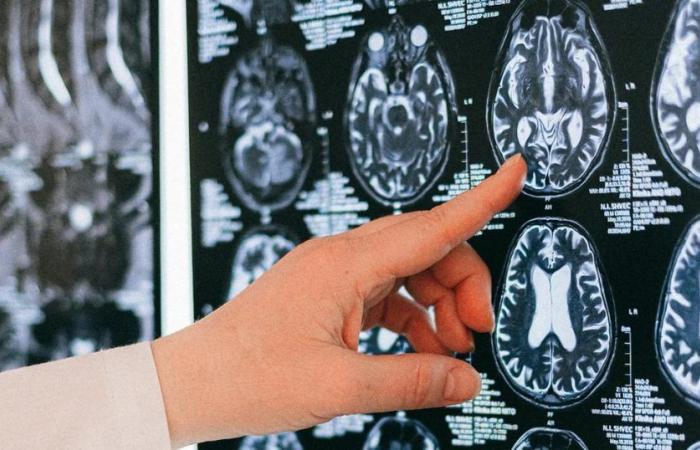He Dravet syndromeis a rare disease of genetic origin also known as Catastrophic Epilepsy of Childhood, since it is originates from the mutation of a gene, SCN1Aand begins to manifest itself from first year of life.
The same is characterized by generating epileptic seizures as a baby and continue with a series of comorbidities that usually appear with older age. Those comorbidities can be portrayed as cognitive delay, behavioral, sleep, motor and speech problems, and autism spectrum.
The Mortality of this disease is high, reaching 15% before adulthood, mainly due to sudden death from epilepsy. It originates from the mutation of a gene, SCN1Aand begins to manifest in the first year of life.
This rare pathologywhose incidence is estimated at one case every 16 thousand births, causes prolonged crises. Patients and their families often experience obstacles to accessing appropriate therapies and social integration. The benefits of using cannabidiol to reduce seizures.
In Argentina, about 60 thousand people suffer from some type of refractory epilepsy; that is, those that do not respond to traditional treatments and require more complex therapeutic schemes. This represents a great challenge both for the health system, which needs to be prepared to assist them, and also for society, which in many cases ends up excluding these patients due to prejudice or ignorance.
Walter H. Silvaneurologist and head of the Epilepsy Service and Video Electroencephalogram (VEEG) Unit at Fleni, explains: “Also known as Severe Myoclonic Epilepsy of Childhoodis a form of epilepsy that is difficult to control and has an estimated incidence of 1 every 16 thousand births worldwide. In our country, unfortunately, we do not have the exact figure, since field epidemiological studies are lacking.”
And he adds that this encephalopathy, of genetic origin, is within the family of channelopathies: “It is produced by the alteration of the functioning of the sodium channels of brain neurons. “which have the function of inhibiting the activity of the cerebral cortex.” Silva details that about 80% of affected patients have a mutation in the SCN1A1 gene.
Generally, this disease appears between 4 and 12 months of life, characterized by epileptic seizures of prolonged duration, which may or may not be accompanied by fever. At older ages, after the age of two, the appearance of other types of seizures is common, such as myoclonus (brief jerks of the arms and legs), atypical absences (brief disconnection of consciousness) and focal seizures with altered consciousness.
“Symptoms of delay in cognitive and psychomotor development are also beginning to be observed. In many cases, ataxia (unsteady, uncoordinated gait), behavioral disorders, including autism spectrum disorders, eating problems such as food selectivity, lack of appetite, and sleep disorders such as insomnia are seen. “Speech and language delay is usually one of the most affected functions”Silva remarked.
Miguel Sarria, president of the Dravet Latam Foundation, indicates that lack of knowledge and poor availability of first-generation medications complicate treatment: “The Dravet syndrome is included in the lists of rare diseases in our countries, which allows slow progress in the social approach to the disease”. He adds that entering education is difficult because institutions do not have the necessary resources to serve this population. “In the public sector there are some inclusion policies that promote educational programs aimed at people in special conditions, but they are still insufficient and poorly controlled.”
Barriers also include primary care. “The control and care of epileptic seizures is basic in nursing, but many institutions refuse due to the complexity of a seizure that can become status epilepticusfrequent in Dravet. Our children have sleep problems, behavioral problems and muscle ataxias, which requires an intense approach with various therapies. Many of these conditions demand extreme patience, causing many institutions to avoid their management, creating discrimination and lack of empathy,” explains Sarria.
Access to medication is another point of conflict in many countries in the region. “The best treatments are not available (they are not recognized) by public or private insurance, so many doctors avoid using them unless families can afford them financially. The laws must provide the legal framework and the authorities the control so that medicines are freely accessible to all patients,” Sarria emphasizes.
In Argentina, therapeutic guidelines for the treatment of epilepsy have incorporated a significant number of drugs. “It is important that doctors are aware of these guidelines and consider the most appropriate options for each patient., taking into account his type of epilepsy and the available evidence,” says Silva. Collaboration between health professionals and patient education about treatment options is also essential to overcome these barriers.
The first therapeutic option is anti-epileptic seizure drugs, which seek to reduce the number of seizure episodes to improve the daily life of patients and reduce cognitive and psychomotor deterioration. “Its effectiveness is measured by the percentage of patients who reduce the number of seizures by at least 50%. The probability ranges between 30-70% with the new medications available,” says Silva. In addition, seizure triggers should be avoided, such as fever, high temperatures, insomnia, and antiepileptic medications that block sodium channels and can aggravate seizures.
The ketogenic diet It is another alternative. “High in fat and low in carbohydrates, it has shown promising results in reducing the frequency and severity of seizures: in approximately 60% of patients a 75% reduction in seizures is obtained. It must be implemented under the supervision of a health professional, due to its possible side effects and the need for strict monitoring,” warns Silva. Gene therapies are also being developed that could correct the mutations associated with Dravet syndromebut they are currently under investigation.
One of the difficulties is that seizures are highly drug resistant. In 80% of cases, patients require more than two medications combined to reduce seizures, and some medications such as carbamazepine, oxcarbazepine, lamotrigine, phenytoin and vigabatrin they can exacerbate them.
He cannabidiol (CBD) has emerged as a hope in recent years. “Her indication became a hot topic in 2013, when the media broke the story of Charlotte Figi, a girl with Dravet Syndrome who experienced a prominent reduction in her seizures after taking a high-CBD cannabis extract. Further research with purified cannabidiol, such as Convupidiolthey demonstrated their effectiveness,” says Silva.
Convupidiol – the first cannabis derivative approved as a pharmaceutical product in Argentina – is indicated as a complementary treatment for seizures associated with Lennox-Gastaut syndrome (LGS) and the Dravet syndrome (DS) in patients from two years of age.






